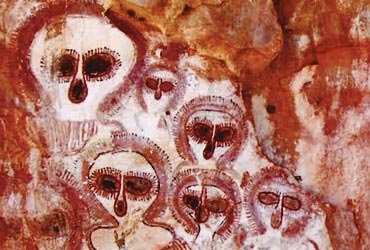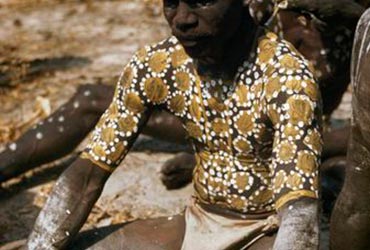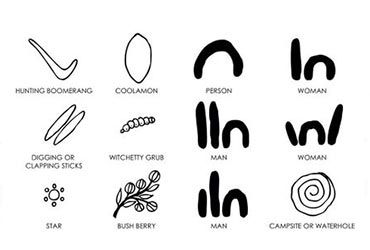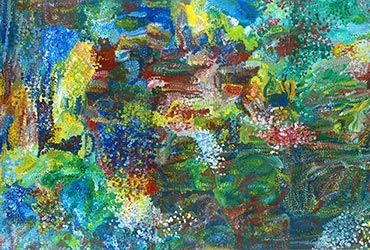STORY OF ABORIGINAL ART
BACK
STORY OF ABORIGINAL ART
Today’s Indigenous art has a history that goes back thousands of years. It is the world’s oldest, continuous artistic tradition.
For generations, the people living in desert and coastal regions painted their sacred art on the ground, on cave walls and rock faces, and on religious objects and carvings. They used natural ochres to apply special designed and patterns on their bodies and they created huge ceremonial ground paintings from different coloured sands and ochres. These traditions continue with different media and in various different forms today.
The contemporary painting of the Central and Western Deserts is part of this unbroken tradition. Like other Aboriginal art forms, including signing and dancing, visual art is closely connected to religious ceremony and practice.
In the early 1970s a group of Aboriginal men living at Papunya in Central Australia began painting a traditional Honey Ant Dreaming onto the walls the local primary school. The artists were senior members of a number of different language groups from the Central and Western Deserts. It was the first time they had publicly shared a traditional Dreaming with non-Indigenous Australians.
The group chose the Honey Ant Dreaming for their mural because it was the Dreaming for the site of Papunya itself and because it was shared by all the groups living there. At the time their decision to paint this dreaming on the school walls was a deliberate attempt to pass on their Law and culture to the next generation of Indigenous children. This decision was to have a huge impact on the outside world.
Soon after the Papunya mural was painted, the same group of men began to paint other Dreamings using acrylic paints, first on boards and later on canvas.
Other men and women in the Papunya community became involved. This led to the establishment of the famous Papunya Tula Artists’ Cooperative, and the beginnings of the contemporary Australian Indigenous art movement.
Before long people in other Indigenous communities in the region began using acrylics on canvas. Some of these communities included Utopia, Yuendumu, Lajamanu and Walungurru in the Norton Territory, and Kiwirrkurra and Wirrimanu in Western Australia.
Eventually this let to the enormous popularity and the high profile that Indigenous Australian art has today both in Australia and abroad.
The Indigenous art boom has never ended and artistic production now extends to the most Indigenous communities in Australia.
Australia’s traditional Indigenous art is now recognised as the oldest ongoing artistic movement in the world which dates back more than 30,000 years. For traditionally oriented Indigenous Australians art is part of their broader system of religious beliefs, known in English as The Dreaming. This system of beliefs is grounded in the earth itself. As consequence traditional art relates back to the land.
Traditional and contemporary Indigenous Australian art is culturally and spiritually rich. All Australians can learn from it.
To be continued ...








